POT ODDS & HAND PROBABILITIES
UNLOCK THE MATH BEHIND SMART POKER DECISIONS
In poker, understanding pot odds and hand probabilities is essential for making winning decisions. It’s easy to fall into the trap of playing by feel — chasing a draw, calling a big bet, or folding a winning hand — simply because it “seems right.” Yet every time a player acts without knowing the math, they risk making a costly mistake. Winning poker is not built on guesswork or intuition alone. It’s built on understanding the mathematical foundation that drives every decision at the table.
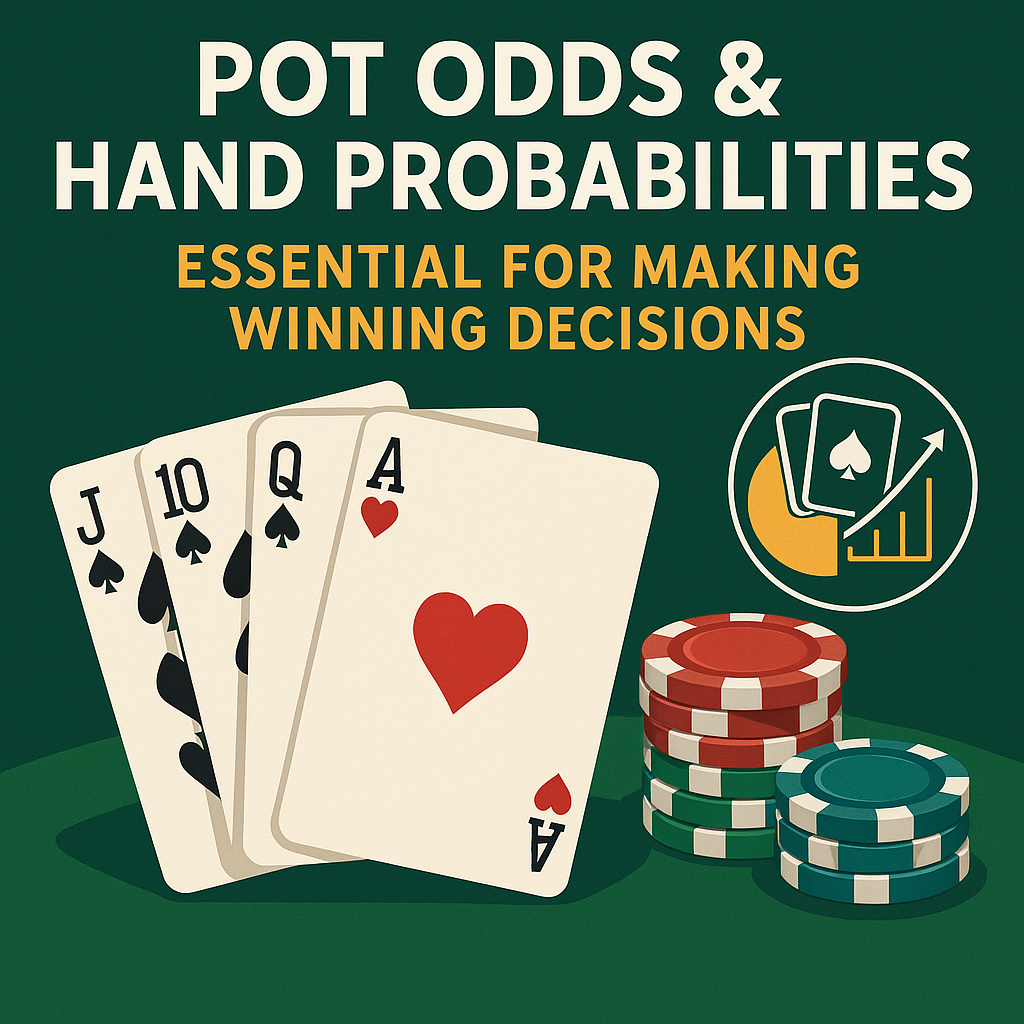
Two of the most important tools for making these decisions are pot odds and hand probabilities. They tell you, in cold, hard numbers, whether a call, fold, or raise is the right move. When you master these concepts, you shift from gambling to strategic thinking — stacking the odds in your favor over the long run.
In this article, we’ll demystify pot odds and hand probabilities. You’ll learn how to calculate them, how to apply them during live hands, and how to avoid the costly traps that catch less disciplined players. Whether you’re new to the game or refining your existing skills, this knowledge will form the backbone of smarter, more profitable poker decisions. Let’s get started!
.
UNDERSTANDING POT ODDS
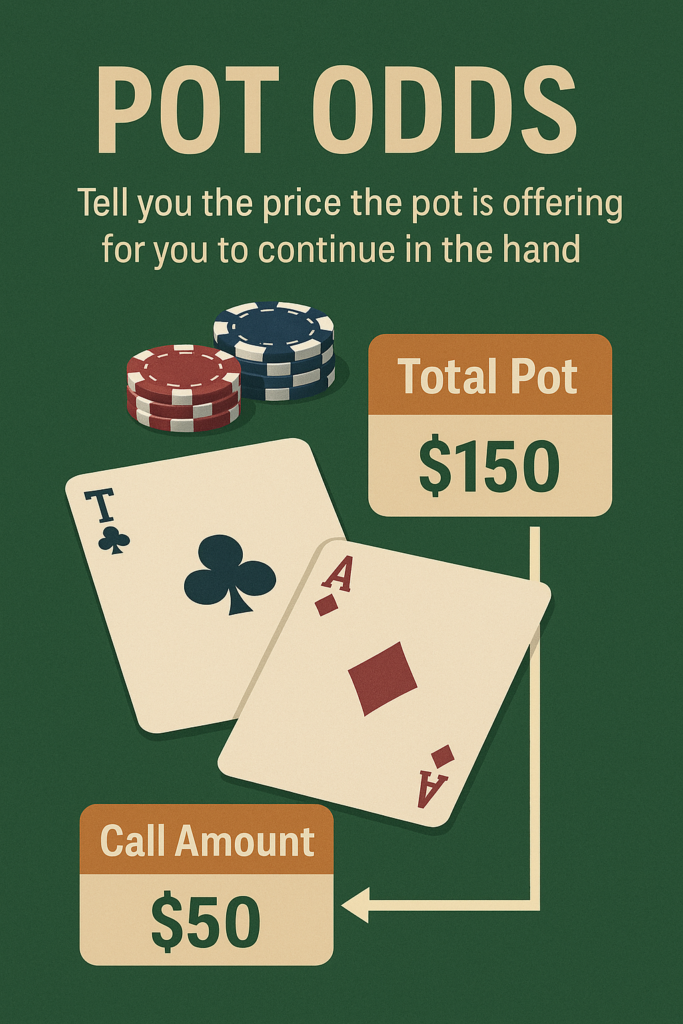
At its core, pot odds are a simple but powerful concept. They tell you the price the pot is offering for you to continue with your hand. Understanding pot odds allows you to judge whether a call is mathematically profitable over the long run — or a mistake that will cost you chips.
Pot Odds Formula:
Pot Size ÷ Amount to Call = Pot Odds
In other words, you compare the total size of the pot after your opponent’s bet to the amount you must call. This gives you a ratio — your pot odds — which you can use to make more informed decisions.
Let’s break it down step-by-step:
IDENTIFY THE TOTAL POT
DETERMINE THE AMOUNT TO CALL
APPLY THE FORULA
First, calculate the total pot after your opponent’s bet.
Example: The pot is $100, and your opponent bets $50. The total pot is now $150.
Next, figure out how much you need to call.
In this case, you must call $50 to continue.
Now, divide the pot size by the call amount:
$150 ÷ $50 = 3
You are getting 3-to-1 pot odds. That means for every $1 you invest, you could potentially win $3 if you complete your hand.
ANOTHER EXAMPLE
The pot is $247, and a player bets $165.
- The new pot size is $412 ($247 + $165).
- The call amount is $165.
Using the formula:
$412 ÷ $165 ≈ 2.5
You are getting 2.5-to-1 pot odds to call.

Pot odds are crucial because they frame every call you make in terms of risk and reward. When your chance of completing your hand is greater than the risk you’re taking, the call is profitable in the long run. When the pot isn’t offering a good enough price, the correct decision is to fold, even if folding feels painful.
By mastering pot odds, you shift your decisions from emotional reactions to cold, strategic calculations — the foundation of a winning poker strategy.
CONVERTING POT ODDS TO PERCENTAGES
While some players prefer thinking in ratios like 3-to-1 or 2.5-to-1, others find it easier to work with percentages. Converting pot odds to a percentage format helps you quickly compare your hand’s chances of improving against the cost of calling — especially when decisions need to be made fast at the table.
Fortunately, the conversion is simple.
Pot Odds to Percentage Formula:
Amount To Call / (Pot Before Bet +Bet+You Call) = Call Percentage
In other words, you divide the amount you must call by the total final pot after you call.
CONVERTING TO A PERCENTAGE - EXAMPLE

The pot is $247, and a player bets $165.
- After the bet, the pot totals $412 ($247 + $165).
- The amount you must call is $165, which will bring the pot to $577
Applying the formula:
$165 ÷ $577 ≈ 0.2859
Converting to a percentage:
28.59%
This means you are investing 28.59% of the pot by making the call.
To make a profitable decision, your probability of winning the hand must be better than 28.59%.
WHY USE PERCENTAGES
For some players, thinking in percentages can feel more intuitive when comparing pot odds to hand probabilities.
For instance:
- If your chance of completing your flush is 36%, but you must invest 40% of the pot to call, it’s a losing play over time.
- If your probability of winning is 45%, and the call only costs you 40%, the call is profitable.
Using percentages helps you align math and intuition more quickly, making it a valuable tool for live poker and online play alike.
UNDERSTANDING HAND PROBABILITIES
While pot odds tell you the price the pot is offering, hand probabilities tell you the likelihood of completing your draw or improving your hand. Mastering both is essential for making profitable decisions over the long run.
Hand probability measures the chance that one of your “outs” — the unseen cards that can improve your hand — will appear on the next card.
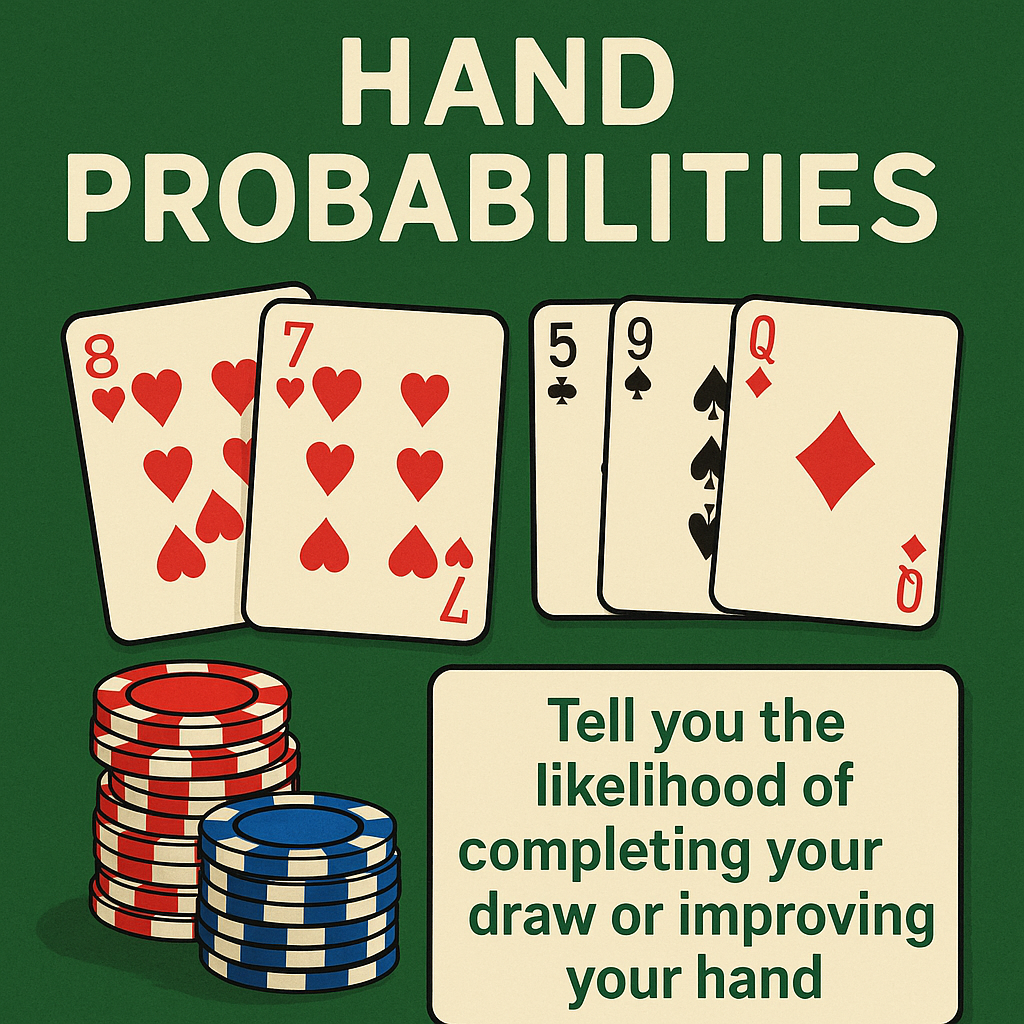
HOW TO CALCULATE HAND PROBABILITY
- Count Your Outs
Outs are the cards that will improve your hand to a likely winner, such as completing a straight, flush, or set. - Identify the Number of Unseen Cards
In Texas Hold’em, there are 52 cards in the deck. You know the two in your hand and the three on the flop (or more if the turn has been dealt).
Unseen cards = 52 minus known cards. - Apply the Formula
Outs ÷ Unseen Cards = Hand Probability
To find the odds format instead of the probability, use:
(Unseen Cards – Outs) : Outs = Odds Against
EXAMPLE ONE
EXAMPLE 2
You hold two spades in your hand, and two more spades appear on the flop.
- Total spades = 13
- Remaining spades (outs) = 9
- Unseen cards after the flop = 47
Probability of completing the flush on the turn:
9 ÷ 47 ≈ 19.15%
Odds against completing the flush:
(47 – 9) = 38 / 9 ≈ 4.22 to 1
✅ You have about a 19% chance of hitting your flush, or about 4.2-to-1 odds against.
You hold 6♣ 7♣, and the flop comes 5♦ 8♠ Q♣.
- Outs = 4 fours + 4 nines = 8
- Unseen cards = 47
Probability of completing the straight on the turn:
8 ÷ 47 ≈ 17.02%
Odds against completing the straight:
(47 – 8) = 39 / 8 ≈ 4.88 to 1
✅ You have about a 17% chance to complete your straight, or about 4.9-to-1 odds against.
EXAMPLE THREE
You hold 10♠ 9♠, and the flop is 8♠ Q♠ 7♦.
- Flush draw: 9 spades
- Straight draw: 4 sixes + 4 jacks
At first glance, you might think you have 9 + 4 + 4 = 17 outs.
However, two cards (6♠ and J♠) complete both the flush, the straight and the straight flush draw.
You cannot double-count them.
Correct outs calculation:
- 9 spades
- 3 additional sixes (6♥, 6♣, 6♦)
- 3 additional jacks (J♥, J♣, J♦)
Total true outs = 9 + 3 + 3 = 15 outs
Unseen cards = 47
Probability of completing either the flush or straight on the turn:
15 ÷ 47 ≈ 31.91%
Odds against completing your hand:
(47 – 15) = 32 /15 ≈ 2.13 to 1
✅ You have about a 32% chance to hit your hand, or about 2.1-to-1 odds against, on the turn. About the same for the river.
Knowing your hand probability allows you to act with confidence rather than hope.
When you compare your hand probability against your pot odds (or call percentage), you can immediately determine whether calling, folding, or raising is the mathematically sound choice.
Mastering this process is one of the key differences between casual players and consistent winners.
APPLYING POT ODDS & HAND PROBABILITIES TOGETHER
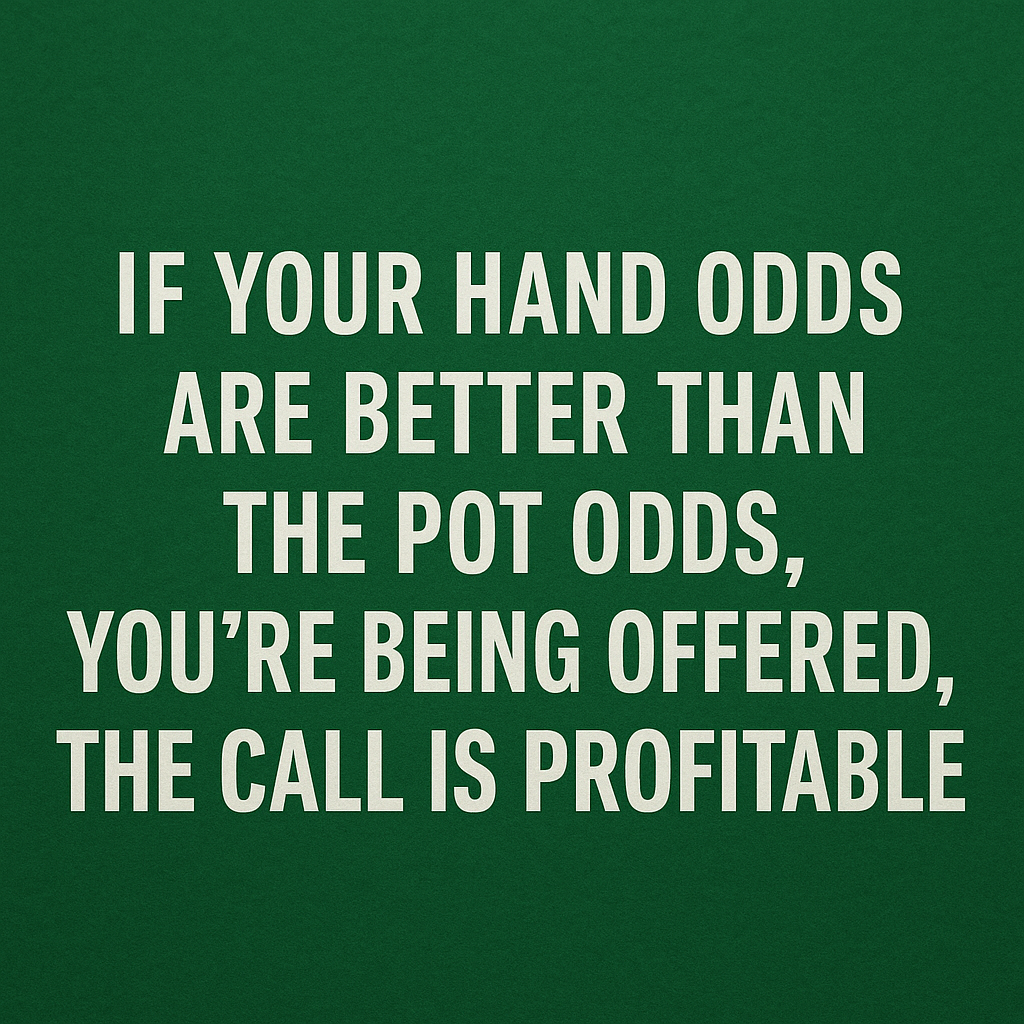
Now that you understand how to calculate both pot odds and hand probabilities, the next step is learning how to use them together to make profitable decisions at the poker table.
The basic principle is simple:
If your hand odds are better than the pot odds you’re being offered, the call is profitable.
If your chance of completing your hand is greater than the risk you are taking, you should call. If not, folding is the correct play — no matter how tempting the situation may feel.
QUICK NOTE ON ODDS VS PERCENTAGES
In this article, we’ve shown both pot odds (ratios) and call percentages (fractions).
While both methods can guide your decisions, it’s important to understand the difference:
- Pot odds (ratios) compare the size of the pot before you call to the cost of your call.
- Call percentages often calculate your investment relative to the final pot after you call.
Because including your own call in the pot can slightly soften your perceived risk, professional players rely primarily on comparing pot odds to hand odds.
This provides a cleaner, more accurate assessment of whether a call is mathematically correct.
From this point forward, we will primarily focus on pot odds and hand odds for decision-making.
FULL HAND EXAMPLE: FLUSH & STRAIGHT DRAW SCENARIO
Let’s walk through a real-world hand that ties everything together.
You are playing $2/$5 No-Limit Texas Hold’em.
- You are on the button holding 10♠ 9♠.
- The flop comes 8♠ Q♠ 7♦, giving you a flush draw, A a straight flush draw and an open-ended straight draw.
The action:
- The big blind bets $50 into a $77 pot.
- Two players fold, and one player calls.
- Action is now on you.
STEP 1: CALCULATE THE POT ODDS
STEP 2: CALCULATE YOUR HAND ODDS
STEP 3: COMPARE POT ODDS TO HAND ODDS
- Pot before the bet: $77
- Big blind bets $50 → New pot: $127
- Cutoff calls $50 → New pot: $177
Your call amount:
$50
Pot odds:
$177 ÷ $50 ≈ 3.54 to 1
✅ You are being offered approximately 3.5-to-1 pot odds to call.
From our previous calculation:
- You have 15 true outs.
- Unseen cards = 47 (after the flop).
Hand probability:
15 ÷ 47 ≈ 31.91%
Converted into odds:
(47 – 15) = 32 / 15 ≈ 2.13 to 1
✅ Your hand odds are about 2.1-to-1 against completing your flush or straight on the next card.
.
- Pot odds = 3.5 to 1
- Hand odds = 2.1 to 1
Since your hand odds (2.1 to 1) are better than the pot odds you are getting (3.5 to 1), the correct mathematical decision is to call.
The reward you are receiving far outweighs the risk you are taking — making this a clear, profitable play over the long term.
Making this call is not about guessing, gut feelings, or hope — it’s about making a decision rooted in math.
Over hundreds or thousands of hands, consistently making calls only when the math supports it will create a strong, steady edge.
This disciplined approach separates winning players from those who rely on chance and emotion.
By mastering pot odds and hand probabilities together, you make every decision a calculated step toward profitability.
WHEN POT ODDS AREN'T ENOUGH: INTRODUCING IMPLIED ODDS
Understanding pot odds and hand probabilities gives you a powerful edge at the table.
However, there are times when pot odds alone don’t tell the whole story.
This is where implied odds come into play.
Implied odds consider not just the pot size now, but also the additional money you expect to win if you complete your hand.
In other words:
Pot odds look at the pot right now.
Implied odds look at the pot + expected future bets.

EXAMPLE: SMALL POT-BIG FUTURE WINNINGS
Suppose you have a flush draw on the flop:
- The current pot is $100.
- Your opponent bets $20.
- You must call $20 to continue.
Pot odds:
$100 ÷ $20 = 5-to-1
If your hand odds suggest you need about 4-to-1 to call profitably, pot odds alone make it an easy call.
But what if the pot odds were tighter?
Imagine your flush draw needed closer to 4-to-1, but the pot was offering only 3-to-1.
Now, implied odds become critical.
If you believe your opponent will continue betting large when you hit your flush, your future winnings more than make up for the shortfall in the immediate pot odds.
✅ Implied odds reward you for thinking beyond the immediate pot.
WHEN TO THINK ABOUT IMPLIED ODDS
DEEP STACKS
LOOSE OR AGGRESSIVE OPPONENTS
HIDDEN DRAWS
When you and your opponents have plenty of chips behind, future winnings can be significant.
Players who can’t fold top pair or strong draws make implied odds much higher.
If your draw is disguised (like a gutshot straight or backdoor flush), opponents are more likely to pay off big bets when you hit.
CAUTION: IMPLIED ODDS AREN'T FREE
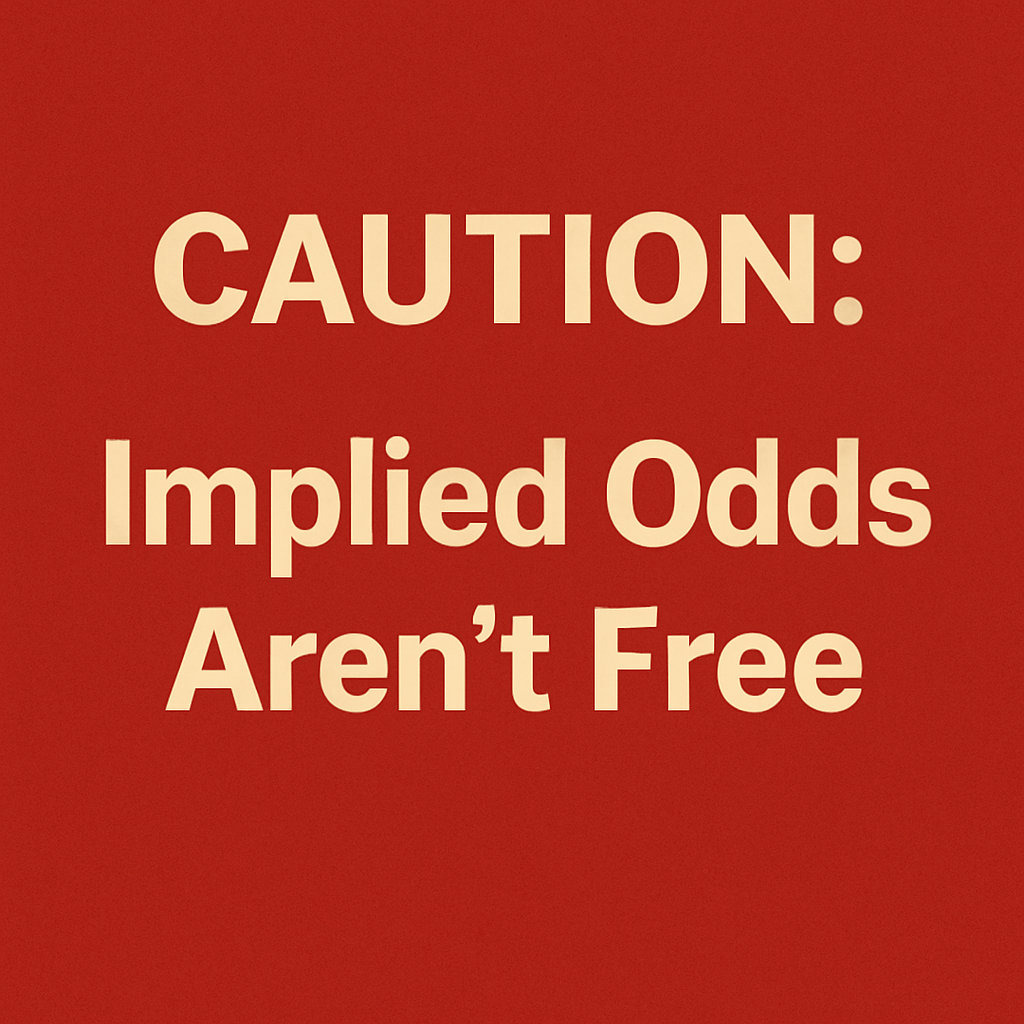
While implied odds can justify borderline calls,
don’t rely on them blindly.
If your opponent is tight and unlikely to pay off a big bet,
➔ your implied odds disappear — and your call becomes a mistake.
Always be honest:
- Will you really get paid if you hit?
- Will opponents fold quickly if the board gets scary?
- Are they aggressive enough to build a big pot for you?
If not, stick closely to your basic pot odds and hand probabilities.
THE OTHER SIDE OF IMPLIED ODDS
When considering implied odds, it’s easy to focus only on the best-case scenario — making your hand and winning a big pot.
But great players also think about the more likely scenario: missing the draw.
Before calling based on implied odds, ask yourself:
- If I miss, how expensive will it get to stay in the hand?
- Will future pot odds still justify additional calls?
- Am I prepared to fold if the next card doesn’t improve me — even if the pot gets bigger?
In other words, don’t just plan for the turn card — plan for the entire hand.
Many players trap themselves by calling cheaply now, only to face massive bets on later streets with no clear plan.
Thinking one or two streets ahead gives you a major edge over opponents who are only reacting to the present situation.
Great players don’t just calculate based on the pot today
✅ They anticipate the pot tomorrow.
Understanding implied odds adds an extra layer of sophistication to your game.
It allows you to correctly call in spots where pot odds alone would say fold, and it sharpens your risk management when chasing draws.
By mastering both pot odds and implied odds, you elevate your decision-making beyond basic math — and step firmly into the world of true strategic thinking.

EDGE CASES & COMMON PITFALLS
Even with a strong understanding of pot odds, hand probabilities, and implied odds, poker still presents tricky situations.
Many players fall into subtle traps when the math isn’t perfectly clear — or when emotional biases creep in.
Here are some of the most important edge cases and common pitfalls to recognize and avoid:
OVERVALUING DRAWING HANDS

One of the most frequent mistakes players make is overvaluing drawing hands, especially weak draws.
Just because you have a straight draw or flush draw doesn’t automatically mean you should call any bet.
Always verify:
- Do my pot odds justify a call right now?
- If not, are my implied odds realistic — or am I wishfully thinking?
Not all draws are created equal.
Low-end straight draws and weak flush draws often have reverse implied odds problems (more on that below).
REVERSE IMPLIED ODDS: THE HIDDEN DANGER
Reverse implied odds happen when completing your hand could still leave you second-best — costing you even more money.
Common examples:
- You complete a flush, but your opponent has a higher flush.
- You make a straight, but the board pairs, and your opponent fills up a full house.
When chasing draws, think ahead:
- If I complete my hand, could I still be crushed?
- Am I drawing to the nuts, or to a hand that could easily lose big pots?
When reverse implied odds are high, you must be much more cautious about calling, even when pot odds seem good.
OVERCONFIDENCE IN IMPLIED ODDS
Players often make the mistake of assuming they have implied odds — without really thinking it through.
Before calling based on implied odds, ask:
- Will this opponent really pay me off?
- Will future streets offer the chance to win big — or will the action dry up?
- How disguised is my hand if I hit?
If you aren’t confident in your implied odds, or if your draw is obvious (like a four-flush on the board), you must rely only on pot odds — and be ready to fold if they don’t support a call.
CHASING WITHOUT PROPER ODDS
Another common mistake is calling too much just because “it’s only a small bet.”
Even small bets can add up to major losses if you chase draws without the correct pot odds or implied odds.
Discipline matters.
If the math says fold — fold.
Don’t justify bad calls by thinking “it’s cheap” — because over hundreds of hands, those “cheap” mistakes stack up into large losses.

To avoid these pitfalls, use a simple in-game checklist:
- Step 1: Calculate pot odds.
- Step 2: Compare to hand odds (or probabilities).
- Step 3: Evaluate implied odds realistically.
- Step 4: Watch for reverse implied odds.
- Step 5: Make the best decision — not the most hopeful one.
Poker rewards players who stay disciplined and punishes those who drift into wishful thinking.
Every small edge compounds over time — and avoiding these common traps is a huge part of building that edge.
USE REFERENCE TOOLS WHEN NEED
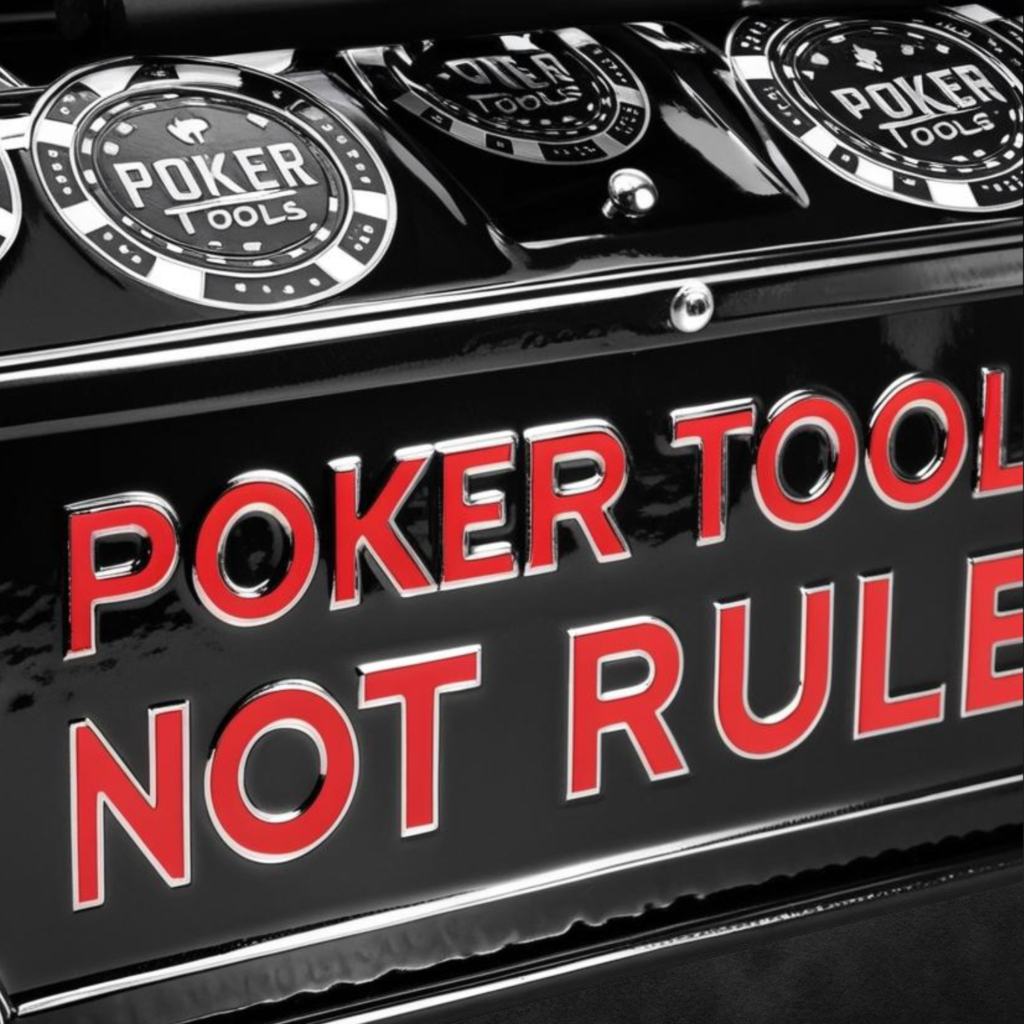
Even seasoned players can struggle to quickly calculate odds under pressure.
That’s why many professionals keep simple reference tools nearby.
If you ever find yourself unsure about the odds or probabilities for a particular draw,
➔ check the Hand Probability & Odds charts available in the PokerRailbird Toolkit for fast, reliable guidance.
Having the right information at your fingertips helps you stay disciplined — and prevents costly mistakes.
SUMMARY & PRACTICAL TIPS
Mastering pot odds and hand probabilities is one of the most important steps a poker player can take to move from guessing to winning with confidence.
These concepts are not optional — they form the mathematical backbone of every profitable decision you make at the table.
Here’s a quick recap of the key points:
- Pot Odds tell you the price the pot is offering for your call.
- Hand Probabilities tell you the likelihood of completing your hand.
- Compare Pot Odds to Hand Odds:
➔ If your hand odds are better than your pot odds, call.
➔ If not, fold. - Implied Odds expand your decision-making by considering future winnings — but must be evaluated realistically, not optimistically.
- Watch Out for Edge Cases:
- Avoid chasing bad draws.
- Be cautious of reverse implied odds.
- Don’t assume implied odds unless the situation clearly supports it.
Poker rewards players who think beyond the immediate hand.
By mastering pot odds, hand probabilities, and implied odds,
➔ you aren’t just learning math —
➔ you are building a system of disciplined, strategic thinking.
Every call, every fold, every raise becomes an intentional act — backed by logic, not hope.
That’s how real edges are created.
And that’s how winning players are made.




